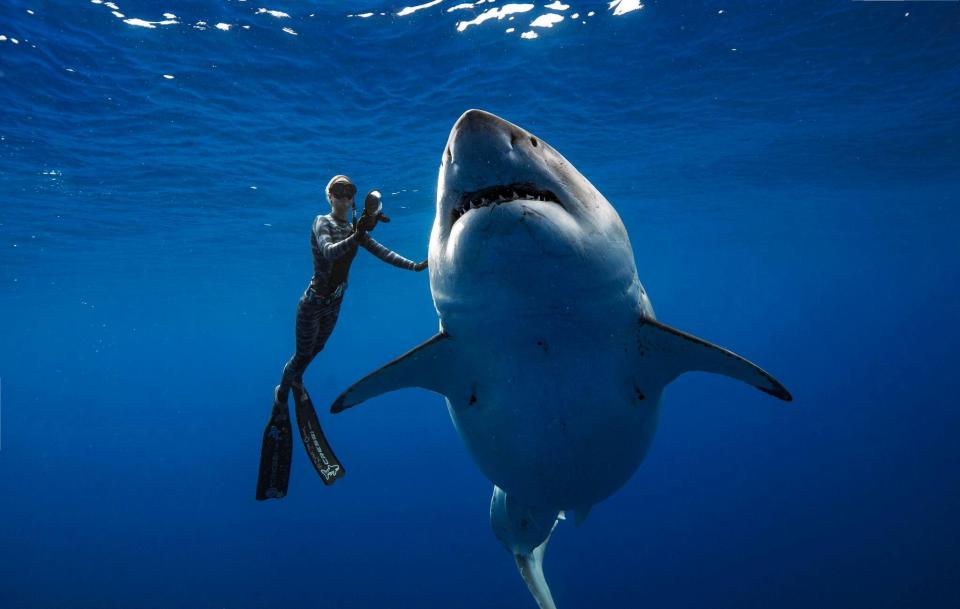LOS ANGELES — We’ve all been in this situation, sort of:
A shark has bitten a chunk out of our boat, which is slowly sinking. This happens to be the world’s largest great white shark – 20 feet and 2.5 tons; also, a couple 15-footers were nearby.
That moment in Hawaii is being shown – and re-shown – in cable’s “Sharkfest/Shark Week” marathon. What thoughts were racing through the mind of Kimberly Jeffries (shown here) at the time?
“I was thinking, ‘This is going to be really expensive to fix,’” she said.
Two things should be noted:
— It wasn’t as expensive as she’d feared. The repairs were about $2,000.
— And the shark didn’t eat her.
She never thought it would, she said. “We’re actually not on their dinner menu. (And) there was a sperm whale carcass it was feeding on.”
That whale was clearly the better meal, said Chris Lowe, who runs the shark lab at California State University, Long Beach. “It’s like having a butter-rich brownie, compared to a vegan snack.”
Jeffries did contact her boyfriend, who arrived (an hour later) with a different boat. After calling him, she resumed photographing the feast. “It was a very beautiful event to document.”
The real fun was a day earlier, when this super-shark first visited the carcass.
“What was really good was how excited everybody got,” Jeffries said. “There were people on the East Coast who were up at 3 a.m., helping identify it …. There were people in Mexico helping.”
Using the markings, they determined that this was the same whale that had been seen near Guadalupe Island in Mexico, some 2,400 miles away.
Jeffries, 37, didn’t become a diver and photographer until she was almost 30, but she’s had a lifelong interest in oceans … partly due to growing up in New York.
“My mom was a single mother, so she would send me to Hawaii a lot,” she said. There, she stayed with relatives and savored the contrast between her two worlds.
She was a surfer, then started looking and photographing under the surface. One goal is to “help people fall in love with the ocean. If we share beautiful images, maybe they’ll feel empathy for the ocean.”
— The documentary (“World’s Biggest Great White?”) reruns on Nat Geo Wild. That’s 6 and 9 p.m. ET Thursday (July 25), 6 a.m. Sunday (July 28), 7 and 10 p.m. Aug. 2 and 6 a.m. Aug. 9.
— It’s also on the National Geographic Channel, at 6 a.m. ET Aug. 18.
— That’s part of “Sharkfest,” which continues through Aug. 2 (with some scattered reruns afterward) on Nat Geo Wild. Meanwhile, “Shark Week” starts its 34th year Sunday (July 28) on Discovery; it continues through Aug. 4.
